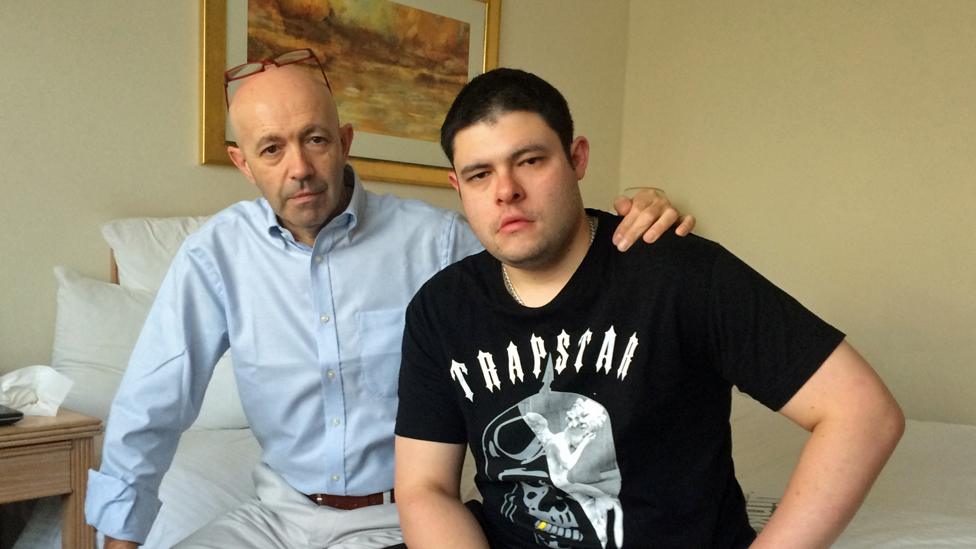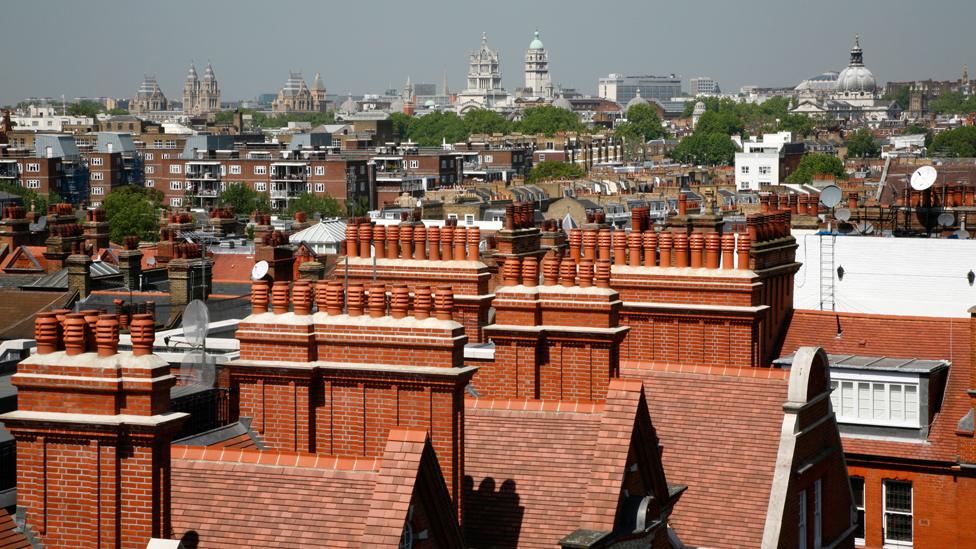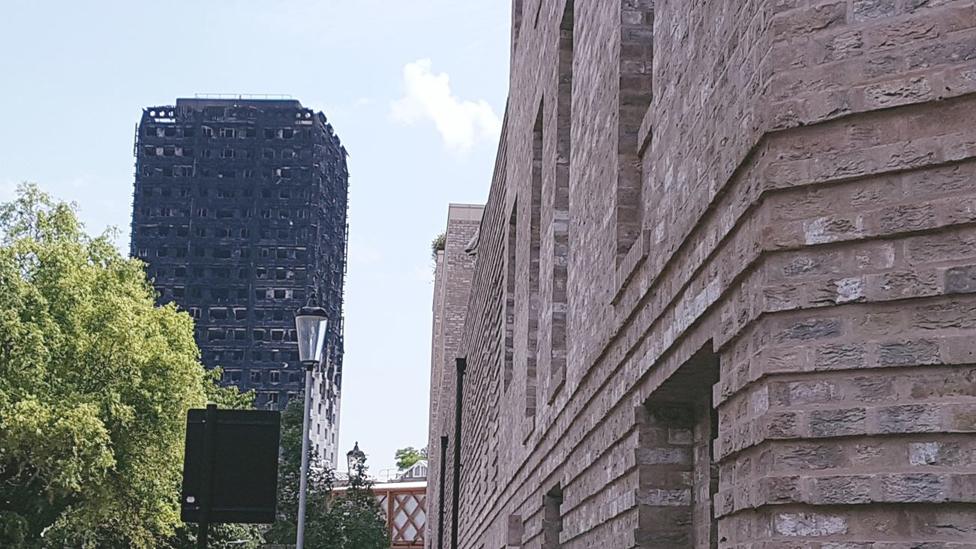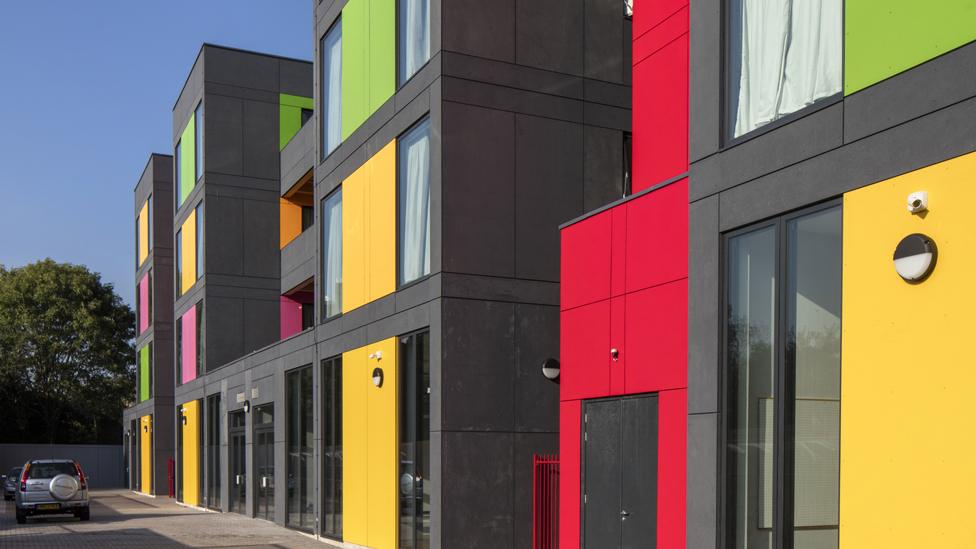Why is it taking so long to rehouse the Grenfell survivors?
- Published

Nearly a month after the Grenfell Tower disaster, only a handful of affected households have been re-housed. Why is there such a delay in accommodating the survivors?
The dilemma
Antonio and Christopher Roncolato (pictured above) are fairly typical of the survivors - they say they want a "decent" home, with secure tenancy, close to their jobs in Kensington.
But this seemingly straightforward request is proving complicated to achieve.
Although 68 flats will be available later this summer in a brand-new block in Kensington - the affordable housing portion of a luxury development - 158 families have been assessed for new housing by the response team.
So far, just 14 households have taken up offers of accommodation. Others are living in hotels or with friends and family.
Does the borough have social housing ?
Kensington and Chelsea has nearly 7,000 units of social housing, but 67% of these homes are small - studios or one-bedroom flats.
Grenfell families are - understandably - turning down homes in older tower blocks. The borough has not said what proportion of these flats is in towers.

Social housing turnover in Kensington and Chelsea is very low
Social housing turnover in the Royal Borough of Kensington and Chelsea is also very low. Last year an average of eight homes (including those owned by housing associations) were socially rented every week across the borough.
So if the families were to wait for suitable properties to become available, it could take a very long time indeed.
Can the private sector help?
While private landlords may want to help the families, they cannot offer the secure tenancies that the families want, according to David Smith, property lawyer and policy director for the Residential Landlords Association.
He says mortgage companies place restrictions on landlords, so that they can't offer leases longer than a year or two. Some freeholders impose similar restrictions.
Can the council build new flats?
There's very little available land in this part of London. In the shadow of Grenfell tower is a brand new estate developed by the council and Peabody Housing Association. It's cleverly designed, and has just won a major award.
It's wrapped around a 1970s tower block, and it took more than two years to build, once planning had been granted and terms agreed.

A new estate stands in the shadow of Grenfell Tower
Is there another way ?
There are plenty of flats for sale in North Kensington, but local estate agents say a two-bedroom home would cost at least £600,000 - so buying individual properties could cost more than £50m.
The think tank Centre for London suggests the council put up modular housing instead. These are high quality - but can be constructed in months, not years.
There's no obvious site for them in the borough, but they could be placed on one of the big development sites west of Kensington.
It would keep the community together, and could last for at least three to five years - while a permanent solution is found.
The London borough of Lewisham has experimented with modular housing to tackle a shortage. The Place/Ladywell Project, designed by the architects Rogers Stirk Harbour & Partners, was opened late last year.

The Place/Ladywell Project uses modular housing to tackle an accommodation shortage

More on the Grenfell disaster
